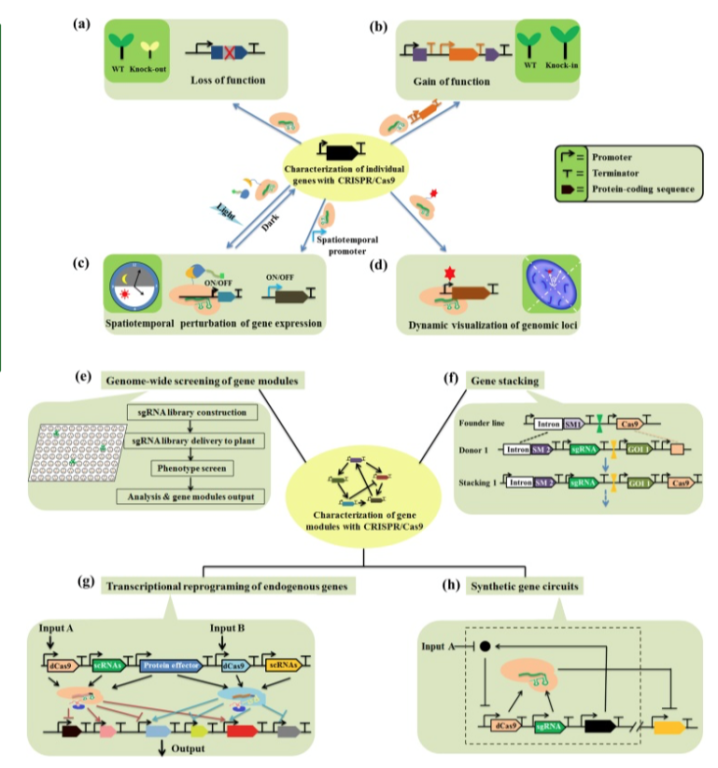
Genome editing with site-specific nucleases has become a powerful tool for functional characterization of plant genes and genetic improvement of agricultural crops. Among the various site-specific nuclease-based technologies available for genome editing, the clustered regularly interspaced short palindromic repeat (CRISPR)/CRISPR-associated protein 9 (Cas9) systems have shown the greatest potential for rapid and efficient editing of genomes in plant species as part of an accelerated domestication and synthetic biology effort.
• CRISPR/Cas9 has been applied to the functional characterization of individual genes through loss-of-function (Figure 1a), gain-of-function (Figure 1b), perturbation of gene expression (Figure 1c), and visualization of spatiotemporal organization of the plant genome (Figure 1d).
• CRISPR/Cas9 systems have a great potential for identification and analysis of gene modules through genome-wide screening (Figure 1e), gene stacking (Figure 1f), conducting complex transcriptional programs of endogenous genes (Figure 1g) and constructing synthetic gene circuits (Figure 1h).
• CRISPR/Cas9-mediated gene knock-out and knock-in approaches hold promise for loss-of-function and gain-of-function analysis, respectively, of individual genes.
• CRISPR/Cas9 opens a new door to the control of spatiotemporal gene expression.
•Genome-wide screening, multiplex genome editing, gene stacking and genetic circuit construction based on CRISPR/Cas9 can be a powerful tool for the future of plant synthetic biology.



